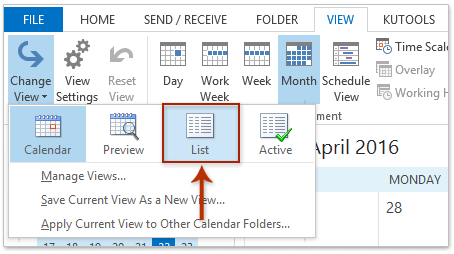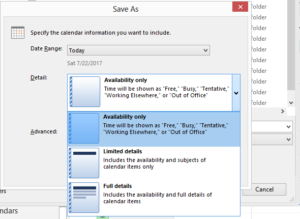Read time 5 min
Businesses, for successful execution of their projects, conduct meetings and communicate their ideas and strategies. That’s why the managers plan meetings using calendar applications and share it with the others. But sometimes, the managers many need to have an offline copy of the calendar events to share with some other users or clients.

Export contacts from Outlook to a CSV file or Excel. Export email, contacts, and calendar to a PST file. Import to Outlook app. Import email and contacts to Outlook 2016 for Mac. Import a Windows PST file into Outlook 2016 for Mac. Export from Outlook app. Export items to an archive file in Outlook for Mac.
So, you need to export the calendar items from Office 365 and you can do it using the PowerShell cmdlets easily.
- Create a network-shared folder to save the PST file.
- The users account should have the read/write permissions to the Exchange Trusted Subsystem group on the folder.

- I am looking for a text script (like the above), save it in a php file, upload it to my server, go to a browser with the URL of the file, and see a calendar in a web page. When I copy the above PHPtoICS.php script to a file saved as PHPtoICS.php and upload to my server, without any amendment, it downloads an ics file (in Chrome), which opens.
- Hi @Marion2415 If you have a business account then Teams should connect to your Outlook calendar and you can use the Outlook add-in - see article here how to enable it in the Teams Admin Centre and steps to help if you do not see it.
- Electronic Sticky Notes Add colorful reminders to desktop with one-click. Visible while working in other applications. Display in front of or behind open applications. Choose note sizes, colors, and fonts. Import & Export Import data seamlessly from Microsoft Outlook or previous versions of AnyTime, and other organizers.
- Open Outlook, Click Calendar in the lower-left corner of the Outlook window. Click the Office button, then click Save As. Click the More Options button. Click the Date Range drop-down menu, and then click the Whole Calendar option to export your entire calendar, or click Specify dates to select a specific range.
Now start the process – Mac catalina latest update.
- Run the following command that will let you any kind of script whether it is signed or not. It will ask you to confirm your selection related to the change in execution policy. Click YSet-ExecutionPolicy Unrestricted
- Run the second command to input the credentials of Office 365 account.
- A pop-up will open and ask you to input the credentials of office 365 account.
- you need to create a session with the Office 365. run the below command –$Session = New-PSSession -ConfigurationName Microsoft.Exchange -ConnectionUri
https://outlook.office365.csom/powershell-liveid/ -Credential $UserCredential –
Authentication Basic –AllowRedirection - It will again ask you to input the credentials of your Office 365 account.
- When the Powershell is connected with the Office 365 complelely, then you can import the whole session by running the following command;
- In last, you can run the cmdlet to export the entire calendar folder ot export the data within the range.New-MailboxExportRequest –Mailbox -IncludeFolders ‘Calendars’ –FilePath ‘D:Meeting RoomAdam.pst’
OrExport-Mailbox-Identity –StartDate ‘22/06/2016’ –EndDate ‘16/09/2017’ –IncludeFolders ‘Calendar’ –FilePath PSTFileFolderNameFileName.pst

Import calendar into the Office 365 mailbox
If you have a CSV file with the important calendar events, then you can import the CSV file into the Office 365 mailbox by following the steps;
- Install the EWS Managed API from the below URL –
https://www.microsoft.com/en-us/download/details.aspx?id=35371 - Assign Impersonation Rights to the account.
- Create the CSV file having all the fields like Date, Subject, Start Date, End Date, Start Time, and End Time.
- Now, run the command;Import-CalendarCSV -CSVFileName D:Monthly Meetingscalendar.csv -EmailAddress
jacob@domain.com -Impersonate $true - If the account does not have the impersonation rights, then you can run another command;Import-CalendarCSV -CSVFileName D:Monthly Meetingscalendar.csv -EmailAddress
jacob@domain.com -username jacob@domain.com -password 1234!@#$
Limitations of the manual import/export
- The manual methods do not let you apply filters easily in the calendar items.
- You need to create a CSV file for importing the calendar items, which may be time-consuming.
- You can export or import the calendar items of the single mailbox only that maybe not enough for a large project.
- If any field in the CSV file is missing, then there is no way to skip it.
- The account should have impersonation rights while importing the data.
- If the session is stopped abruptly during the export, then you will have to start the export process again. It may also corrupt the PST file.
- There can be some errors in the Mailbox Export Request Access path is denied.
Conclusion
To overcome the limitations of the manual import/export method, you should use the Kernel Office 365 Backup & Restore tool. This software lets you take the selective backup of unlimited mailboxes and restore multiple PST files to multiple Office 365 mailboxes. The Office 365 Backup & Restore tool gives you the flexibility of choosing any folder from the mailbox, apply filters to it, and save it in the PST file. There is no limitation on the number of mailboxes for taking the backup and the tool will save a separate PST file for each mailbox.
Similarly, you can import the entire PST file or its chosen folders into the Office 365 mailbox. After the completion of import/export, you will get a complete migration report with the status of each migrated item. You can also save the migration report in a CSV file.
You can share calendar information in Microsoft Outlook by either sharing a calendar folder, if you have an Exchange Server account, or by exporting the contents of a calendar folder to an iCalendar calendar (.ics) file. Calendar information can also be shared online using a variety of protocols.
For more information about sharing online calendars, see Sharing Online Calendars, RSS Feeds, Microsoft SharePoint Foundation Folders, and Exchange Folders.
Sharing Calendar Folders

Sharing messages are used to either invite or request access to a calendar folder, or to respond to a sharing invitation or request by either allowing or denying access to a calendar folder. To construct a sharing invitation or sharing request, the CreateSharingItem method of the NameSpace object is used to create a SharingItem object. A Folder object reference to the desired calendar folder is used to establish the sharing context for the sharing message.
Note
You can only reference the Calendar default folder when creating a sharing request. A single SharingItem object can represent both a sharing invitation and a sharing request, if the Calendar default folder is used as the sharing context.
Sharing responses are automatically created and sent by calling the Allow or Deny methods of a SharingItem which represents a sharing request. Calling the Allow or Deny method allows or denies, respectively, access to the requested folder - the user requesting access need not receive the sharing response.
Exporting Calendar Information
The CalendarSharing object is used to export information from the calendar folder to an iCalendar calendar file, and can also be used to create a MailItem object that not only contains the iCalendar calendar file as an attachment, but also provides the calendar information as formatted HTML within the body of the mail message. The CalendarSharing object provides several properties that can be used to limit the scope and detail of calendar information included in the iCalendar calendar file and in the body of the MailItem.
The GetCalendarExporter method of the Folder object is used to obtain a CalendarSharing object reference for a specified calendar folder. From the CalendarSharing object, you can either use the SaveAsICal method to save an iCalendar calendar file, or you can use the ForwardAsICal method to create a MailItem that contains both formatted calendar information and an iCalendar calendar file.
Once exported, an iCalendar calendar file can be opened by using the OpenSharedFolder method of the NameSpace object.
Support and feedback
Export Calendar Microsoft Outlook 16.9 2020
Have questions or feedback about Office VBA or this documentation? Please see Office VBA support and feedback for guidance about the ways you can receive support and provide feedback.